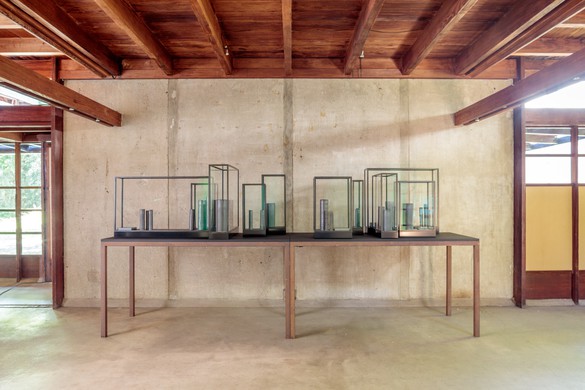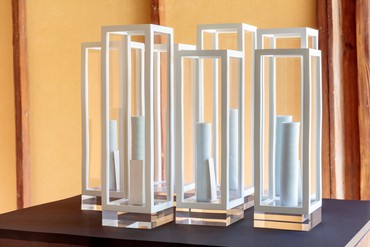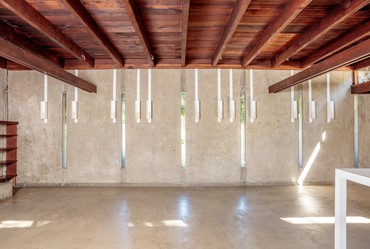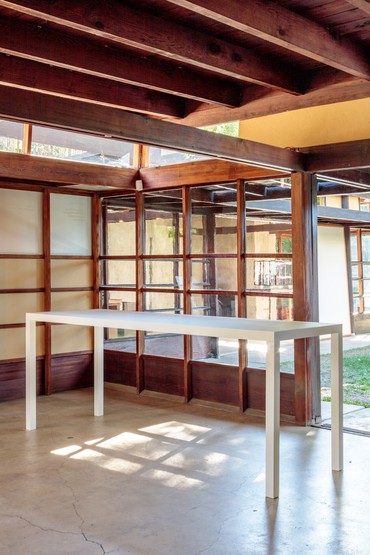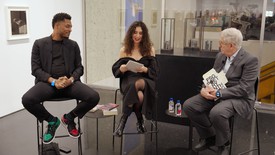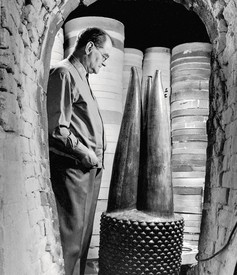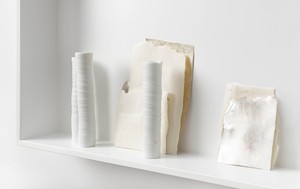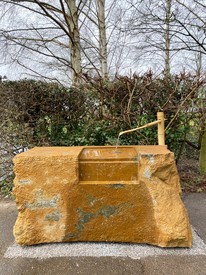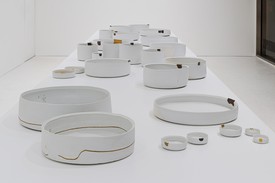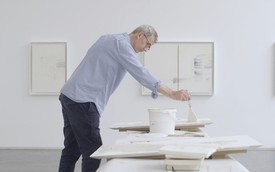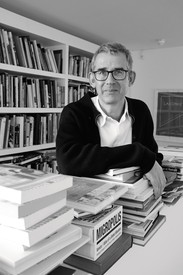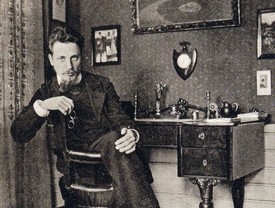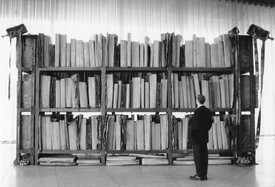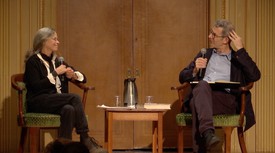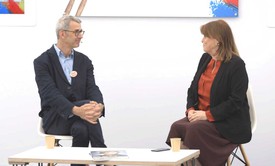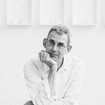
A potter since childhood and an acclaimed writer, Edmund de Waal is best known as an artist for his large-scale installations of porcelain vessels, which are informed by his passion for architecture, space, and sound.
The Schindler House is an idea about beginnings. It stands as an attempt to create a place for both cooperative living and cooperative practice, to reset the conditions in which a modern family could live and experiment. At the heart of Schindler’s vision are spaces whose liminality is startling: the movement between rooms, the function of rooms is rethought: the edges of the thresholds are the edges of ideas. Partitions can be shifted—or indeed removed. “I like it,” wrote Schindler. “We shall not have to be grown-ups in there—it reaches only to our shoulders—and will play with us.” This possibility of a house as a testing ground, a playground, manifests in the synergies between materials: concrete, wood, copper. It is present in his use of different room heights to surprise you. Famously Schindler revised fenestration whilst a house was being constructed, visiting jobs every day to get to know the quality of light. Imagine employing Schindler.
Schindler’s house was provocative. It contained four studios of equal size for Schindler, the composer Pauline Schindler, the ceramicist Marian Chace, and Marian’s husband, the painter Clyde Chace. It became a site for contemporary dance, for music and debate. Richard Neutra wrote his book on American architecture Wie baut Amerika? while living here. John Cage and Edward Weston both lived here. Visitors, tenants, disciples, lovers came and stayed and went.
I’ve loved this place for a very long time. I had a photograph of it in an early studio of mine. Its provocation seemed to lie in the idea of experimental working as I worked dogmatically with clay, its nonchalance about the exigencies of heating (I was in the foothills of damp Welsh mountains), and its openness to the world. I was sure—wrongly—that Schindler must have lived in Japan. Its grip has tightened. The last decades of traveling to Vienna have made me think of what it might mean to be an émigré and build a house, to question what you bring with you when you start again so definitively. “I feel completely alien here. I should prefer to go back to Vienna,” Schindler wrote to Neutra. This is a kind of provocation too.
My own practice has circled around modernism. My first ever architectural intervention, in 1999, was held at High Cross House in Devon, England, built by the American architect William Lescaze in 1932—a house that attempts to bring severity and clarity into the damp Devon countryside. I placed a long line of porcelain vessels on the flat roof to collect rainwater and hid installations within the sliding cupboards. I haven’t really stopped since.
For –one way or other– I’ve created a series of dispersed installations placed in conversation with particular elements of the building—floor, concrete wall, wooden clerestory. A group of twelve vitrines, the size of lancet windows, hang against the concrete wall of Pauline’s studio. Each vitrine contains a strip of gilded porcelain, a single white vessel, and a single piece of alabaster. The gilding is there so that a faint and fugitive aura comes and goes. Other vitrines reflect the fiercely schematic floor plan of the house—its Raumplan, volumes transformed into steel cases of black vessels. And another group, positioned in the bay window of Marian Chase’s studio, contains vessels and leaning pieces of silver. Schindler’s practice always returns me to the action of leaning, that certain casualness. The early photograph of the walls of the house being erected is still compelling after almost one hundred years. I hope the materials that I am using here are at ease with themselves.
On reflection, if there was a single action I wanted for this house it would be leaning.
And there is a sound piece, an installation created by the composer Simon Fisher Turner, a musician who has collaborated extensively with other artists, dancers, and filmmakers—most extensively as composer for Derek Jarman’s films. We spent some days capturing sounds from the places in Vienna where Schindler studied, the sounds of doors shutting and footsteps along the corridors of the Imperial Technical Institute, the Bauschule (where he attended Adolf Loos’s lectures and where he made friends with Neutra). There are faint echoes of the Opera House, of the cloakrooms in the Secession building, of trams passing. And sounds of my studio. Cage’s 4'33" is present too. It is a beautiful palimpsest of presences and absences of Vienna.
In Schindler’s study, Anton Webern’s Drei kleine Stücke, played by the cellist Matthew Barley, can be heard intermittently. Walking in Vienna, I knew I needed Webern’s hard and beautiful exploration of structure, written in 1914 and published ten years later, to echo with this hard and beautiful space. Barley’s new recording of this piece and his remarkable Cello Improvisation, which follows it, feel another exacting part of this conversation.
And I’ve made a table. It’s both a text and an object for Schindler. There are moments of gold. The surface is washed with porcelain slip, drawn over, written through, scratched into. It is a testing of memory. Not all of it is legible, but then not everything needs to be immediately given and understood. I’ve called it leaning late—words borrowed from a favorite poem by Wallace Stevens, “The House Was Quiet and The World Was Calm,” in which reader, text and house become one. It is a perfect image for this very particular place.
Text and artwork © Edmund de Waal; photos: Joshua White/JWPictures.com
